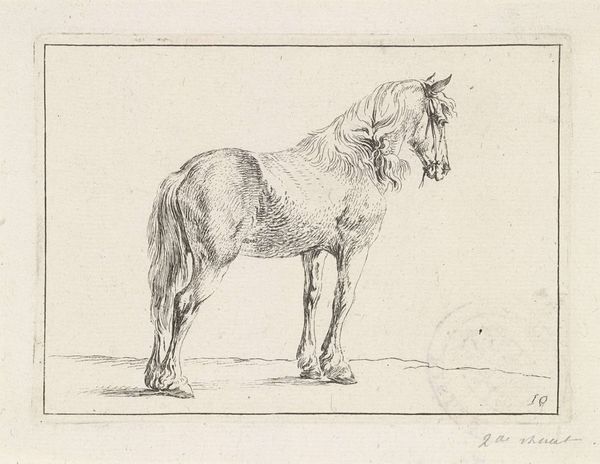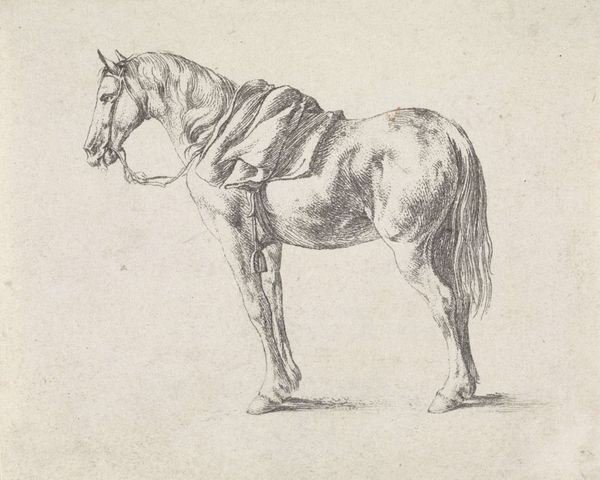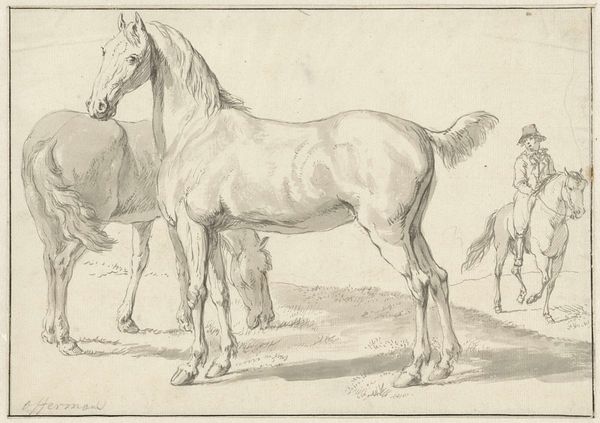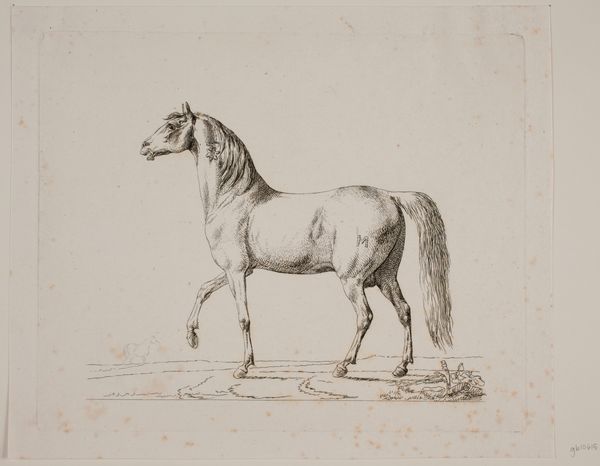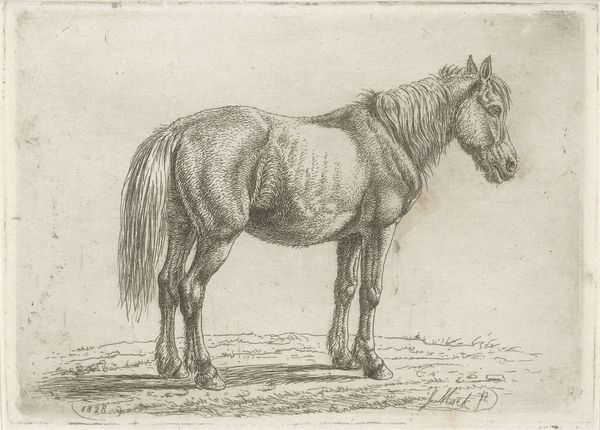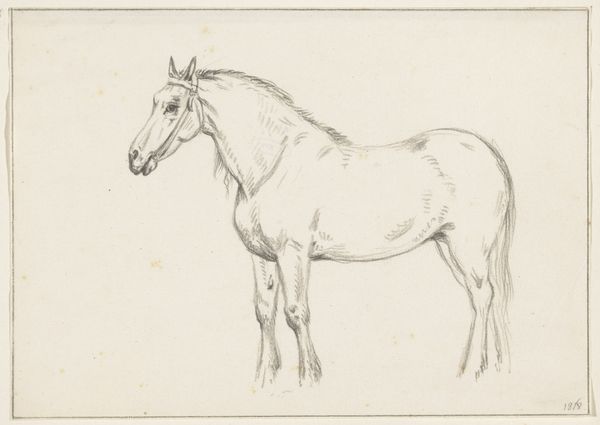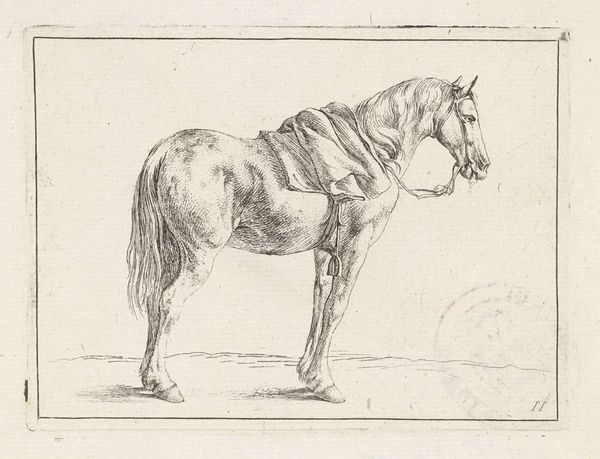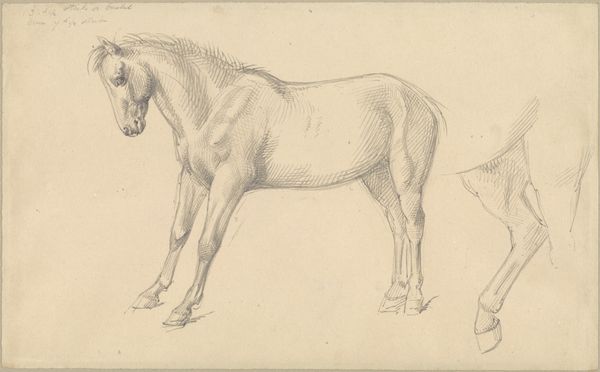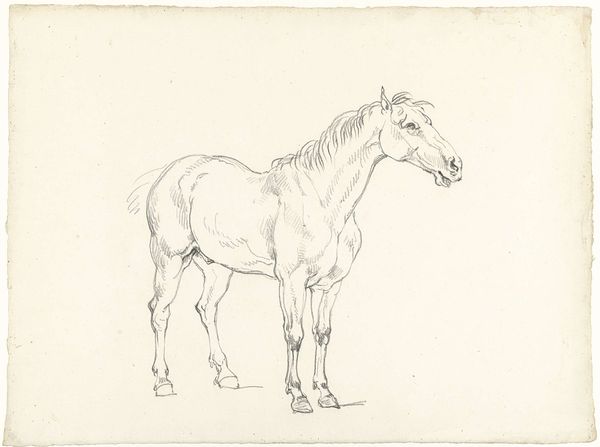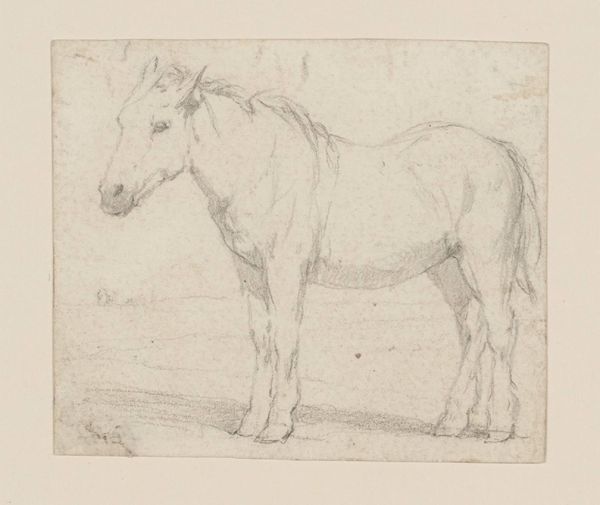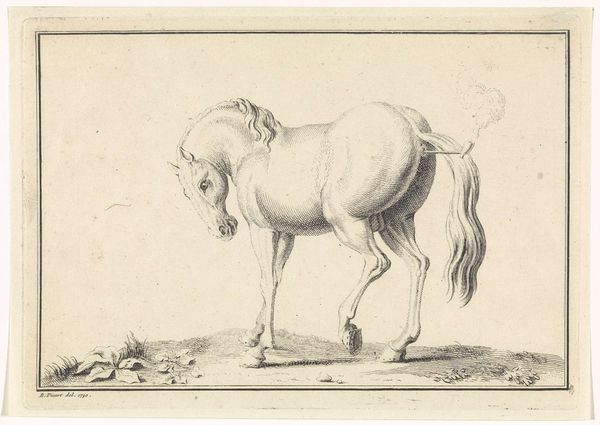
drawing, pencil
#
pencil drawn
#
drawing
#
animal
#
pencil sketch
#
landscape
#
figuration
#
personal sketchbook
#
pencil drawing
#
pencil
#
horse
#
realism
Dimensions: height 207 mm, width 283 mm
Copyright: Rijks Museum: Open Domain
Editor: Charles Parrocel’s "Unsaddled Horse, Facing Left" – a humble pencil drawing sketched sometime between 1698 and 1752. It has this quiet, almost melancholic air about it. What do you make of it? Curator: Oh, isn't it lovely? You know, I see in it the quiet observation, a moment caught between the grandeur of equestrian portraiture and the sheer physicality of the animal. Parrocel seems to have truly enjoyed capturing the weight of the horse, the way its muscles shift and pull even at rest. Did you notice how softly he renders the light? Almost as if to not wake the poor thing. Editor: Definitely! It feels so much more intimate than a formal painting. Like we're peeking into the artist's sketchbook. Was this kind of casual study common at the time? Curator: Absolutely! Think of it as the artistic equivalent of a scientist’s field notes. For an artist like Parrocel, who was known for his battle scenes, these studies were crucial. He’s figuring out how to depict motion, weight, life! It’s like a poet jotting down observations on a napkin. The very act of drawing – isn't it kind of like a meditation? He's not just copying; he's feeling. Editor: That makes so much sense. It’s like he's getting to know the horse on a deeper level. Curator: Exactly! It reminds me of something Degas said: "Drawing is not the same as form, it is a way of seeing form." Don't you think this applies beautifully here? We aren’t just seeing a horse; we are seeing Parrocel’s *way* of seeing a horse. Editor: That’s given me a whole new appreciation for what goes into creating those big, impressive history paintings. Thanks! Curator: My pleasure! And doesn't it make you wonder what other treasures might be hidden in artists' sketchbooks? The possibilities… *snaps fingers*… endless!
Comments
No comments
Be the first to comment and join the conversation on the ultimate creative platform.
